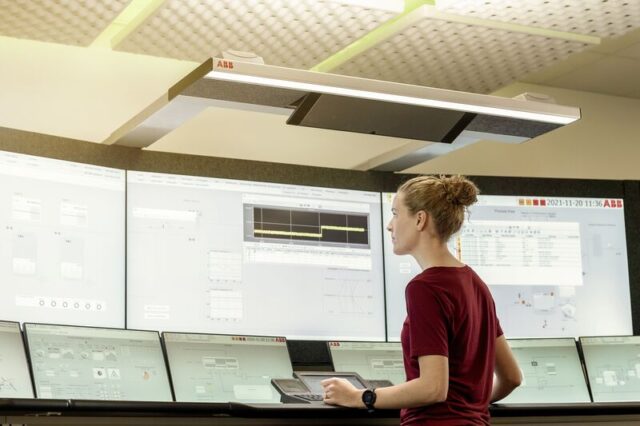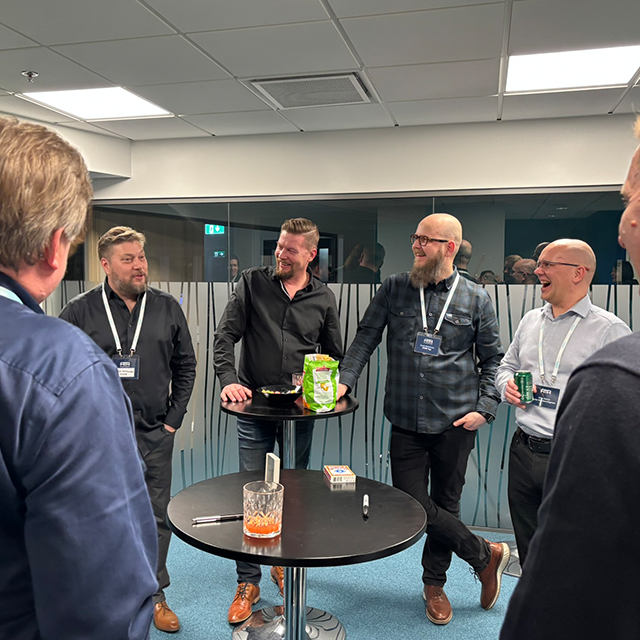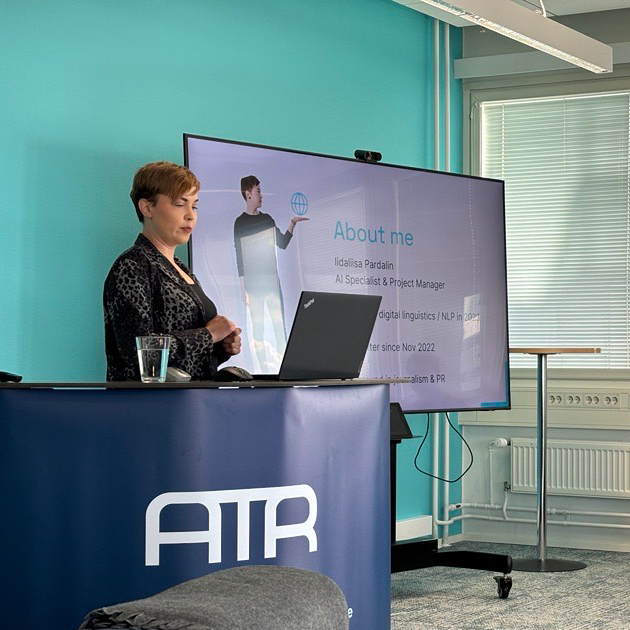
“The key is ensuring everyone understands the situation in the same way. Core questions in project management include what is being done, why it’s being done, how it’s being done, and who is doing it.”
What exactly is project management? What are the essentials for steering a project towards success? What are the primary tools in a project manager’s toolkit? Our project management experts addressed these questions during a guest lecture at Turku University of Applied Sciences’ Object-Oriented Programming course. The positive feedback from students demonstrated that practical tips drawn from real-life experiences are the best complement to theoretical foundations.
Explore the project management toolkit to see how we at ATR ensure the success of customers’ projects. Our project management experts have extensive experience in leading large initiatives that support business development. These 10 tools are genuinely everyday utilities they employ in their work. Naturally, the tools evolve over time and circumstance.
At ATR, we excel in leading both software projects and larger initiatives without unnecessary formality. Project management here is grounded and conducted in close collaboration with people. Our clients have described us as friendly, communicative, and approachable.
What is Project Management?
Project management is dynamic leadership. It’s not enough for something to be done once; it needs maintenance and assurance that the process is running smoothly. The leadership is ongoing and aims for shared understanding, which is built through dialogue. Ensuring everyone sees the situation the same way is crucial. Core questions include what is being done, why, how, and who is responsible.
At ATR, we focus heavily on communication and maintaining close contact. Creating shared understanding is facilitated by our approach to work closely alongside the customer. The project manager is responsible for continually fostering shared understanding and advancing the entirety of the project with others, taking care of both people and matters regardless of title.
Tool #1 Resources
Working with people requires energy exchange, regardless of the circumstances. Sufficient sleep, regular exercise, and proper nutrition help leaders convey the right energy. It’s important for leaders to focus on themselves and ensure their own resources. Effective time management ultimately revolves around energy management, and varying performance levels should be anticipated.
Tool #2 Thought
Personal thought patterns reflect on others and influence the overall mood of the project. Project managers must consciously infuse positive thinking into their projects. Being mentally present is crucial. Interaction and discussion play significant roles in project management. Students were interested in how individuals are acknowledged in project management and how their skills are best utilized. Interaction plays a crucial role here as well. Project leaders create images of success for their teams, utilizing techniques like guided imagery to ensure goal achievement.
Tool #3 Expression
Growth occurs together. Using the collective form fosters community spirit. At ATR, we make things happen and avoid ruminating on “buts”. Progress is achieved through positivity, not forgetting constructive feedback. Emotions are permitted, but their emphasis should be moderated. Within a project, a common vocabulary must be established. Effective project management refrains from using passive sentences or conditional forms. Instead, it’s essential to specify who does what.
Tool #4 Collaboration
Collective action differs from doing things together. People are different, and a project manager should be very aware of and understand these differences. Cooperation can occur even in diversity, as long as there is awareness. Diversity is a strength that even facilitates collaboration. Empathy, compassion, and the ability to step into someone else’s shoes are essential tools. Project managers must support people in understanding one another. Roles and responsibilities clarify collaboration, which happens across multiple channels simultaneously.
Tool #5 Learning
Working in projects is continuous learning. Mistakes are gifts that drive progress. Learning arises from errors. Feedback enables development. Lessons should also be drawn from successes and replicated. The best understanding comes from focusing on the root cause of occurrences. By asking “why” enough times, one delves deeper, often discovering the root cause is “I assumed” or “I misunderstood”. Nothing should be assumed; communication is key. Sharing expertise and lessons learned should be ensured through communication.
Tool #6 Documentation
Documentation ensures shared understanding. Through documentation, understanding remains intact and traceable. The plan is most crucial, along with decisions made and what was decided. The larger the project, the greater the importance of documentation. It’s vital to consider where to document information and how to make it accessible to everyone. Documentation is done for the benefits it provides, not as a mere formality.
Tool #7 Service Design
Project management also benefits from service design, which is a vital aid in projects. It allows for understanding the customer and what they truly need. Project goals should not be left to how well customers articulate their needs. Sometimes, the initial desire differs from actual needs. Our task is to ensure understanding and thereby ensure the right actions are taken.
Tool #8 Quality
Testing methods vary. Monitoring and guiding project progress are crucial for quality assurance in project management. Various processes and standards support project quality, which is always project-specific.
Tool #9 Agility
What is agility? A bold way of operating, commented the audience. That’s exactly what it is. Mistakes are inherently linked to agility. It’s beneficial to make mistakes as quickly as possible. When piloting, the goal is to identify paths that should not be pursued as swiftly as possible. Only by traversing familiar paths can one detect wrong paths too late. In general, project managers ensure that changing customer needs are addressed smoothly.
Tool #10 Project Management
Project management is a productivity tool. Often, project managers employ those project management methods and software in use by the company or customer. At ATR, work aligns with the ATR Project Frame, which is constantly under development. The project management taught in educational institutions is just a small part of everyday project management.
Would you like to discuss further how human-centric project management fits into software development initiatives? Reach out to us!





